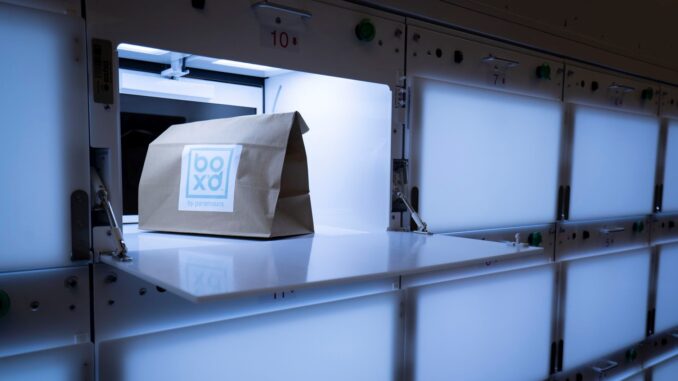
By Graham Campbell, COO of Givex - 10.25.2020
This is going to be a difficult winter. With no end to the COVID-19 crisis in sight and hopes for a substantial relief package dwindling, restaurant owners are looking for solutions that will allow them to continue safely serving customers without, in most cases, the luxury of outdoor seating. Over the past seven months, plenty of ink has been spilled — and screen time aired — about what restaurant owners and municipalities are doing to ensure customers feel safe dining out, but less attention has been paid to an equally critical element: the safety of restaurant employees.
Fortunately, this summer has seen the introduction of a number of technological innovations that help protect employees, and many of those resources will become even more crucial throughout the winter. Some restaurants, like Toronto’s Box’d, have even created fully automated experiences that eliminate all interactions between staff and customers. But restaurants don’t have to go that far to ensure the safety of both staff and customers. Here are just a few of the ways restaurants should be upgrading their operations to survive the winter.
Limiting Contact
Accommodating effective social distancing in back-of-house operations is no easy feat, but upgrading your ordering system can go a long way toward limiting contact between employees. If you’re still using paper chits to track orders, stop. Anything that passes hands or requires employees to interface directly is going to put them at risk. Now is the time to invest in cloud-based POS technology and kitchen display systems that will allow front-of-house staff to send orders to the kitchen and multiple back-of-house staff members to access those orders without any physical contact.
Communicating Digitally
In the past, back-of-house staff would shout over the clamor of the kitchen to communicate about the timing of specific items in a particular order. Now, kitchen display systems are designed to time out orders strategically to the various stations in the kitchen, limiting vocal communications between staff, making it easier to keep masks on and reducing the risk of transmission via speech.
Reducing Customer Table Time
The longer a customer has to wait for their order, the more time they are spending near your staff. By implementing technology that helps back-of-house workers efficiently prioritize orders and align cook times, you can get customers out the door faster and maintain more physical distance within the restaurant. Restaurants can also utilize technology that will provide more accurate pick-up times for takeout orders, further reducing the time customers spend waiting for their orders inside the restaurant.
Decentralized Work Stations
The problem with single-station POS systems — even those that send orders to the kitchen digitally — is that wait staff have to share them, meaning they touch the same screen and crowd the station waiting for their turn. By providing servers with their own tablets to take and submit orders, restaurants allow waitstaff to punch in orders from anywhere in the restaurant, making it easier to limit contact and maintain safe social distancing from other employees.
QR Codes
The summer saw a resurgence in the use of QR codes among restaurants, but many establishments have only scratched the surface of their utility. QR codes can allow customers to access menus on their phones, eliminating the need for paper menus, which can be vectors for transmission. Some restaurants have also developed systems where customers scan a QR code outside of the restaurant to receive an alert when their order is ready. And because every free camera app can read them, QR codes are a low-cost and easily implemented solution to a range of concerns. We’re likely to continue seeing new and innovative applications of QR codes throughout the winter.
As we approach winter, and the uncertainty it will bring, restaurant owners should get their technology in order to prepare for the worst. By leveraging technology, owners can improve operations, staff accordingly and limit the risk to their customers and front- and back-of-house staff.
 Graham Campbell, COO of Givex, a global cloud-based operations management solution designed to streamline business efficiencies and generate valuable and actionable customer data with offices in Canada, the United States, the United Kingdom, Australia, China, Brazil, Singapore and newly opened in Mexico City. Campbell is an innovative technology executive with over 13 years of experience in the payment, e-commerce and point of sale sectors. He started at Givex in March 2006 and since then has held positions including: VP of Projects & Implementations, VP and General Manager of Givex’s point-of-sale (POS), Senior VP of Product Development and now holds the position of the company’s Chief Operating Officer.
Graham Campbell, COO of Givex, a global cloud-based operations management solution designed to streamline business efficiencies and generate valuable and actionable customer data with offices in Canada, the United States, the United Kingdom, Australia, China, Brazil, Singapore and newly opened in Mexico City. Campbell is an innovative technology executive with over 13 years of experience in the payment, e-commerce and point of sale sectors. He started at Givex in March 2006 and since then has held positions including: VP of Projects & Implementations, VP and General Manager of Givex’s point-of-sale (POS), Senior VP of Product Development and now holds the position of the company’s Chief Operating Officer.
Are you an industry thought leader with a point of view on restaurant technology that you would like to share with our readers? If so, we invite you to review our editorial guidelines and submit your article for publishing consideration.

